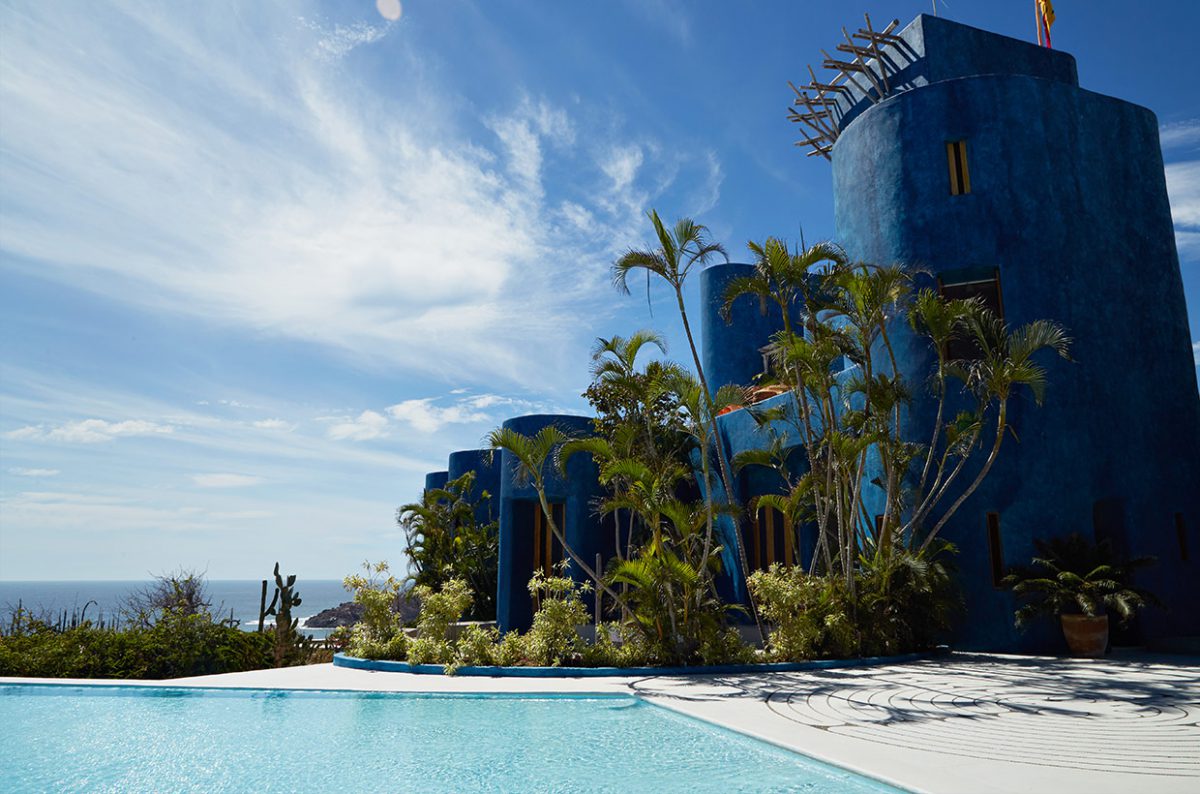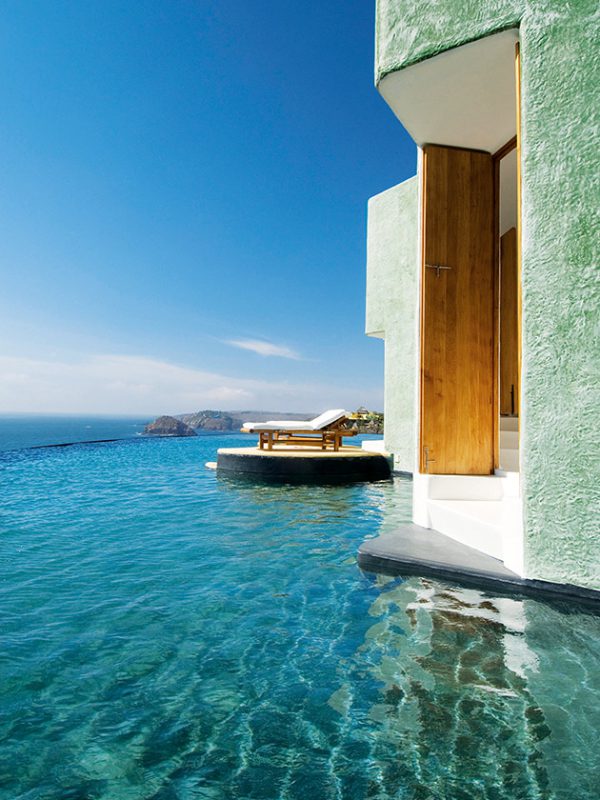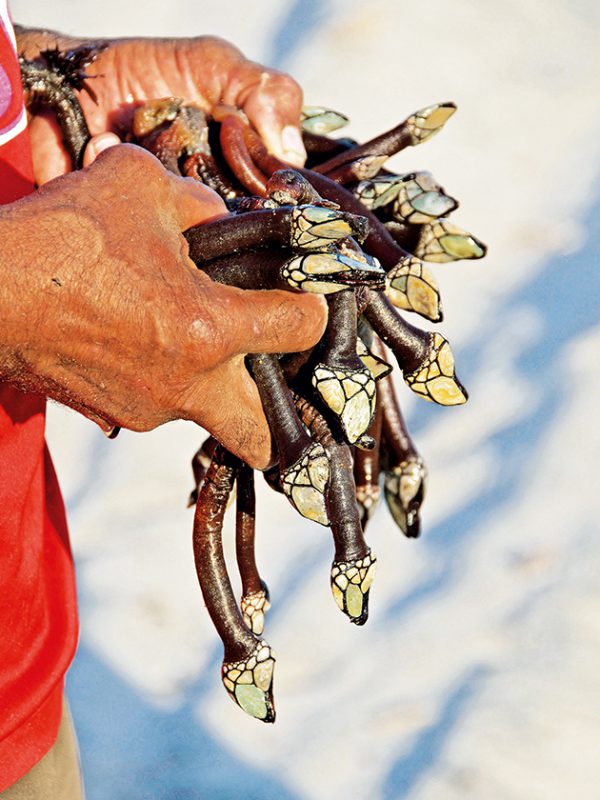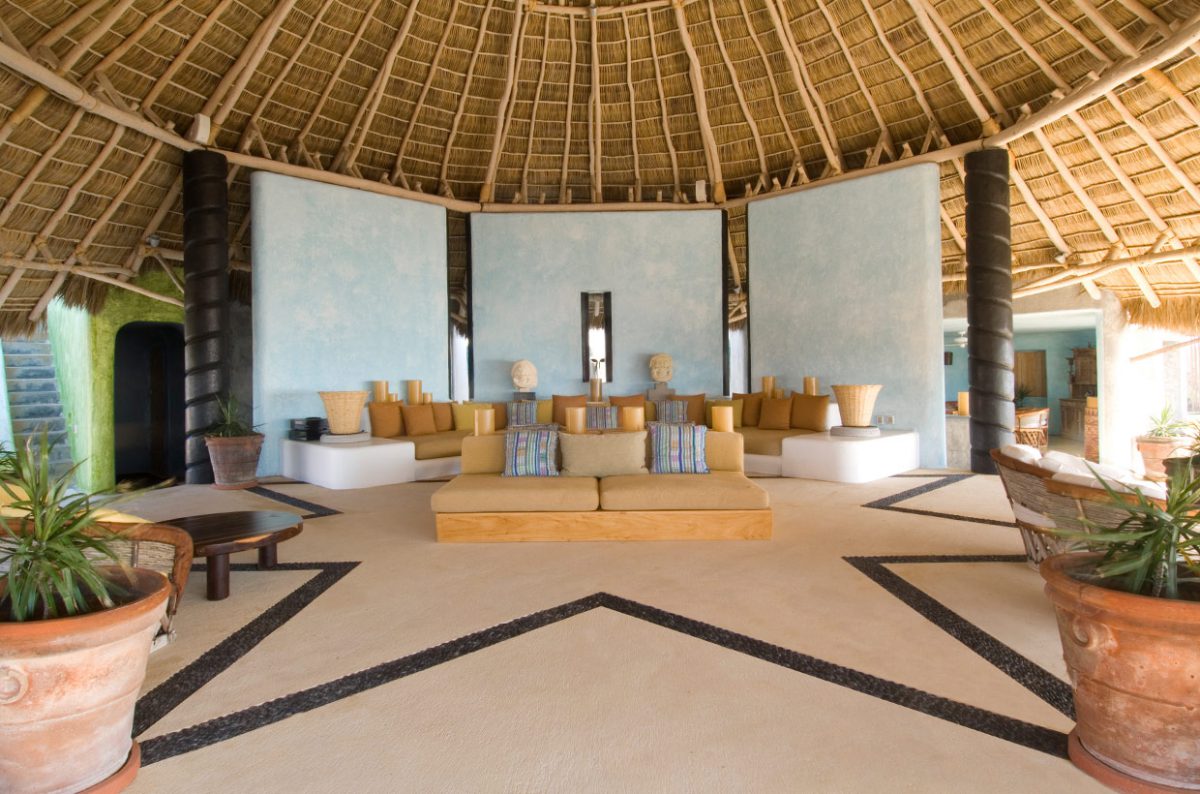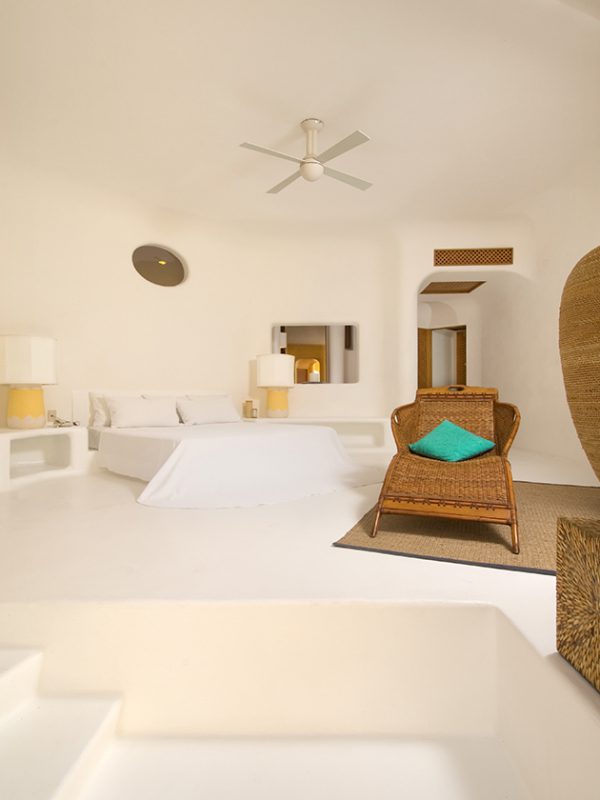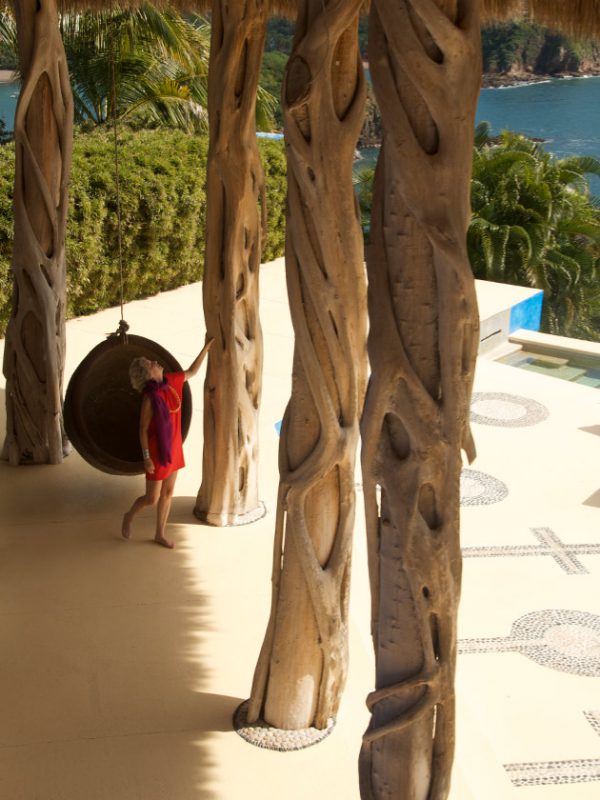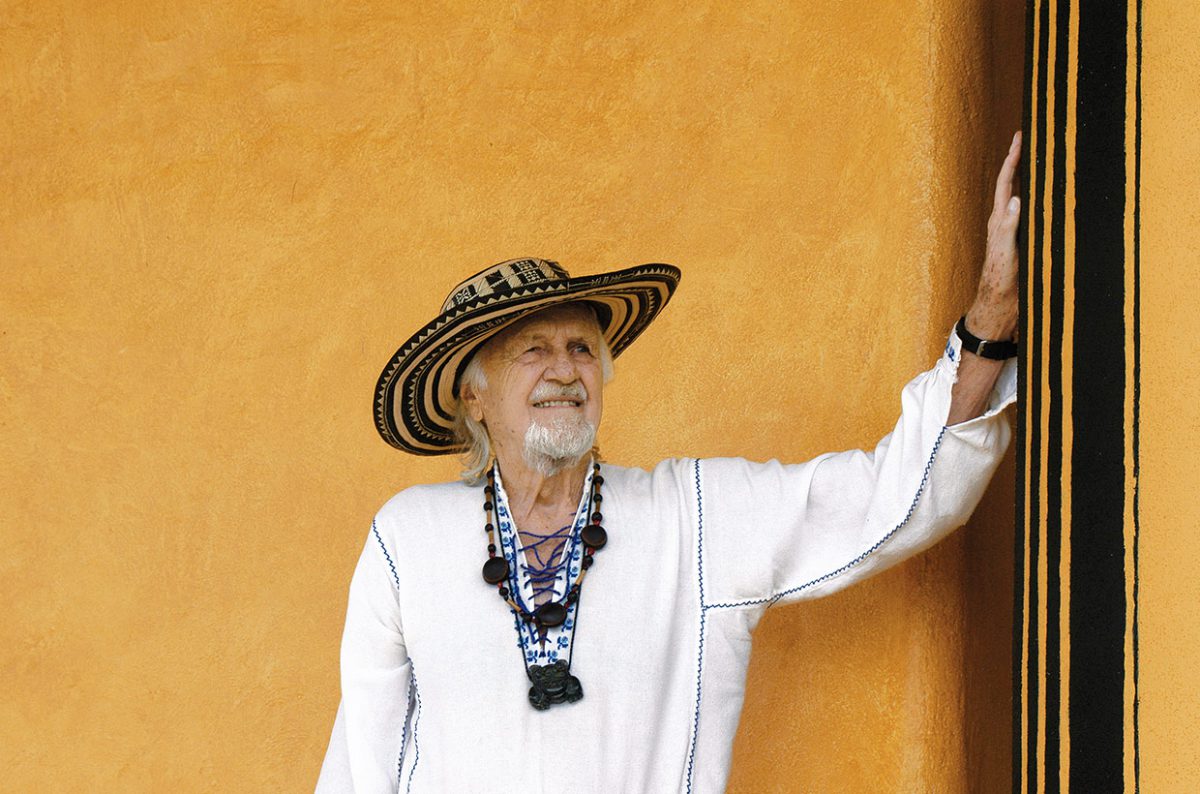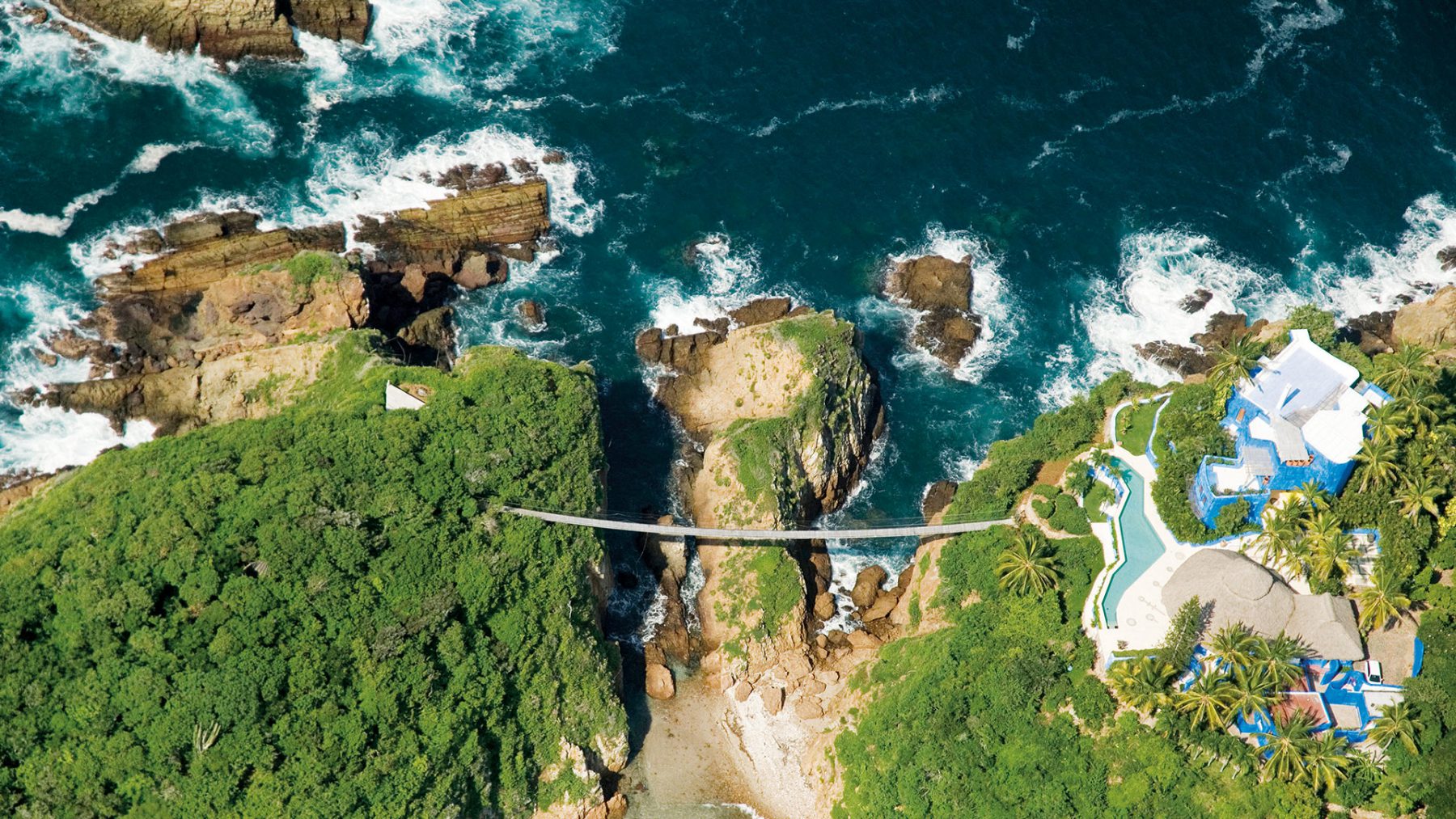Dolce Vita on the Mexican Coast by Steffi Kammerer | 24th November, 2017 | Personalities
It’s hard to imagine a more beautiful place to ring in the New Year than at Careyes, a Mexican resort on the Pacific coast between the jungle and the beach. A little different from other retreats, it is more sensual, more glamorous, more adventurous and more relaxed. And the international set that comes here is as vibrant as the multicolored buildings.
Magic. That is how virtually everyone who has ever been here describes it – a place with brightly hued frontages, 13 kilometers of coast and seemingly infinite views across the Pacific Ocean. The Costa Careyes Resort in Mexico is located three hours south of Puerto Vallarta. It consists of private villas and colorful casitas that boast blue, green and red exteriors and are nestled into the steep hillside at different elevations. Add to that a few hotel rooms and pink bungalows right on the beach. There are also spectacular round buildings called “ocean castles” that look like sculptures and are entirely surrounded by infinity pools that seem to flow into the sea. In high season, a night in one of these little water castles will set you back $ 11,000, but that includes a butler and a chef. In total, there is space for 600 people in Careyes – a purposely manageable number. Everything here bears the signature of Turin-born Gian Franco Brignone, the scion of an Italian banking family, artist and property developer. In 1968, Brignone flew across this part of the coastline in a propeller plane, and fell in love with the unspoiled, rugged landscape from the air. There wasn’t a single road, only dense jungle, rocks and beaches. He spontaneously bought the land and hired the Mexican architect Marco Aldaco, who is famous these days for his open, airy architecture designed to harmonize with the elements. First, Aldaco built him the radiantly blue Casa Mi Ojo building complete with a suspension footbridge to a neighboring cliff. The name references the eye Brignone lost in his younger years. This set the tone for the rest of the development: Careyes is individualistic, a bit eccentric and definitely not for the mass market. Soon, Brignone’s jet-setting friends from Europe dropped by: playboys, bon vivants and heavyweights like Gianni Agnelli or the finance tycoon James Goldsmith. Word about the secluded sanctuary soon got around.
“We want to attract interesting
and creative international people.”
Filippo Brignone
To this day, the Brignones prefer to rely on word of mouth: this way, friends of friends will visit, a pretty good guarantee that everyone fits in. Those who wish to purchase a property here have to have deep pockets, as well as meet 27 criteria that are as unusual as they are charming. Prospective buyers are expected to appreciate the “music of the skies, the earth and the sea” and “have committed most of the seven deadly sins.” Being multilingual and having a good sense of humor are also essential. The distinct nature of the resort is also reflected in its logo, which consists solely of a question mark adjacent to an exclamation mark. Careyes is an attitude towards life. There are hardly any right angles or sharp edges, everything is rounded and flowing. Underneath the tall roofs made of palm leaves, a soft breeze is blowing. It is a sensual place replete with lush bougainvilleas. In the restaurant, flowering strelitzias stand beside huge bowls of seafood. Many things have been quite deliberately omitted, like jet skis and any kind of hullabaloo or noise. There aren’t even any beach umbrellas or sun loungers. Instead, there is simple beauty: straw mats on warm sand, hammocks hanging beneath palm trees. Robinson Crusoe meets James Bond – it is all ultra-luxurious, but also primal. Nature and its unpredictability are ever-present. On the land side, Careyes is surrounded by a huge biosphere reserve containing 14,500 hectares of tropical forest, complete with crocodiles, pumas, jaguars, vultures, snakes and coyotes. On the unspoiled beaches, more than 2,000 giant turtles lay their eggs every year, eagerly protected by the family and a biologist. After all, “Costa Careyes” means “turtle coast.” Just like he has done for the last 50 years, Gian Franco Brignone, who is now 91, keeps a watchful eye on every detail in the grounds. In 2006, the Mexican president awarded him the Orden Mexicana del Águila Azteca (Order of the Aztec Eagle), the highest honor bestowed on foreign nationals. Brignone has four children, who jointly look after Careyes: Giorgio, Filippo, Sofia and Emanuela. And just like their father taught them, they go from table to table to welcome their guests from all over the world and to introduce them to each other. The family has kept celebrity induced pandemonium away from Careyes, there are no paparazzi lying in wait. “We manage this because we are discreet,” says Filippo, one of his two sons. “We do not use our guests’ names for PR and there is no social press around, except for very special events. We respect the privacy of our celebrity guests.”
“A place that does not grow will die;
one that grows too quickly will also die.”
Filippo Brignone
Quentin Tarantino shot the final scenes of Kill Bill in one of the houses, Cindy Crawford did her Herb Ritts nude photo shoot here and Bruce Weber chose Careyes as the setting for his CK Obsession campaign. Seal and Heidi Klum got married in Careyes and Giorgio Armani, Francis Ford Coppola, Bill and Melinda Gates and Paris Hilton have all been here. Especially over Christmas and New Year’s, Careyes attracts a wide variety of loyal guests, many of them Europeans, too. Some reserve their next stay when they leave in January. Bookings should be made by July at the latest, Filippo says – after that, spaces become scarce. Right next to Careyes is the Cuixmala resort, which was built by Brignone’s old friend James Goldsmith after visiting Careyes multiple times. There were some years of tension between the two families when they found themselves suddenly competitors, but nowadays both sides make an effort. Similar kinds of people come to both resorts. Everyone here is part of one big, dolce-vita family. There is always a cocktail or dinner party somewhere. In the semicircular bay off the main beach – the Playa Rosa – small boats, not super yachts, bob softly in the water. You hear conversations in half a dozen languages, accompanied by the sounds of the waves crashing onto the rocks. Some nights there is a campfire on the beach. The unwritten rule regarding cellphones in Careyes is simple: switch it off, hide it or lose it. Filippo puts it this way: “It is a natural instinct that we encourage.” He is the president of the Careyes Foundation, which focuses on ecology, education and the arts. It also supports children from neighboring villages and arranges weekly English lessons in eleven elementary schools. There is a “by invitation only” film, music and arts festival; world-class polo with tournaments from November to April; and for the past two years, the Ondalinda music festival has taken place here. Careyes is expanding organically. “A place that does not grow will die,” says Filippo. “But a place that grows too quickly will also die.” His father built around rocks and trees, and decided against many a construction project. This will remain the approach. Filippo lives in the Tigre del Mar house where a wooden ladder juts out above the roof and into the sky. On its top rung there is a bottle of tequila – a welcome present for the gods, or whoever else may drop by.
